- Home
- Mack Maloney
B005J4EW5G EBOK
B005J4EW5G EBOK Read online
The author and publisher have provided this e-book to you without Digital Rights Management software (DRM) applied so that you can enjoy reading it on your personal devices. This e-book is for your personal use only. You may not print or post this e-book, or make this e-book publicly available in any way. You may not copy, reproduce or upload this e-book, other than to read it on one of your personal devices.
Copyright infringement is against the law. If you believe the copy of this e-book you are reading infringes on the author’s copyright, please notify the publisher at: us.macmillanusa.com/piracy.
For SEAL Team 6
Thanks to NCIS Special Agent Chris Ahr and the real pirate hunters of Combined Task Force 151, USS Mason, DDG–87, and to Al Picardal and everyone at CENSECFOR, LS Pearl Harbor, Hawaii.
Contents
Title Page
Dedication
Acknowledgments
Chapter 1
Chapter 2
Chapter 3
Chapter 4
Chapter 5
Chapter 6
Chapter 7
Chapter 8
Chapter 9
Chapter 10
Chapter 11
Chapter 12
Chapter 13
Chapter 14
Chapter 15
Chapter 16
Chapter 17
Chapter 18
Chapter 19
Chapter 20
Chapter 21
Chapter 22
Chapter 23
Chapter 24
Chapter 25
Chapter 26
Chapter 27
Chapter 28
Chapter 29
Chapter 30
Forge Books by Mack Maloney
Rescue in the Jungle!
Copyright
1
Airfield 414
Udorn, Thailand
March 1968
THE C-130 CARGO plane took off in a violent rainstorm.
It was 2350 hours, almost midnight, and the monsoon that had battered Southeast Asia all day was still intense. The wind was fierce and lightning flashed everywhere. The thunder was like artillery booming in the distance. This was dangerous flying weather, but the C-130’s mission was a top priority. It was going to fly no matter what.
The aircraft rose from its secret base on the eastern edge of Thailand and turned north, over Laos, heading toward Vietnam. The four-man crew was wearing standard U.S. Air Force flight suits, each with his name tag attached—DAVIS, LEE, RUBY and JOHNSON—but the crew members were not military personnel. They were civilian employees of the CIA.
Five containers were stacked in the plane’s cargo bay. Four were made of plain thin plywood barely held together by tiny screws. At six feet long and about two feet wide, they looked like bargain-basement coffins.
The fifth container was an SMT. About the size of a footlocker and officially known as a “Sensitive Materials Transport,” these containers were used by the CIA to move highly classified material around the war zone. Built of the same nearly indestructible material as an airplane’s “black box,” SMTs had small, sealed-environment enclosures to preserve their contents over long periods of time, be they documents, important items taken from the enemy or even secret experimental weapons.
Several SMTs had been captured by communist troops during the recent Tet Offensive, causing the loss of valuable war intelligence. Since then, SMT containers were supposed to be accompanied by at least two armed guards at all times. But this one was traveling alone.
There was no paperwork attached to any of this cargo; no manifest or ID tags were in evidence. The only writing was on the SMT: The letter “Z” had been faintly stenciled onto it, next to an almost imperceptible keyhole.
The C-130’s crew did not know what was inside any of the crates, though their collective gut told them some kind of secret weapon was probably involved. The plane’s pilot was carrying sealed orders issued by their CIA station chief in Bangkok. These orders were not to be opened until the cargo plane reached a so-called control coordinate about 100 miles from the border that divided North and South Vietnam.
Only then would the crew know the details of their mission.
* * *
FIVE MINUTES AFTER takeoff, the C-130 reached its cruising altitude of 10,000 feet. It had now gotten out of the worst of the storm—though the weather was still harsh over most of Indochina.
It would take forty minutes before the plane reached the control coordinate where the crew’s orders could be opened. To help pass the time, the flight engineer produced a thermos of coffee. He poured cups for the pilot and the copilot and himself. The cargomaster had his own thermos. He preferred tea.
With the crew settled in, the cargomaster pulled out a copy of The New York Times, dated two weeks before. He showed the others a small story, stuck deep inside the third section. Its headline read: “Nixon hints at nuke use in Vietnam.”
The pilot saw the headline, nodded to the SMT in back, and joked, “Is that the ticking sound I hear?”
The flight engineer was quick to dismiss this notion. He’d been on the flight line when the SMT arrived and said none of the people handling it had worn radiation suits. However, he said they might have been wearing gas masks; it was hard to see in the torrential downpour. If so, perhaps the SMT contained some kind of secret poison gas.
But now the copilot disagreed. He, too, had been close by when the SMT was being loaded and he thought he saw the people handling it wearing hazardous material suits. That indicated some kind of deadly material, a powder or something, might be involved.
“But if that’s the case,” the pilot said, “where are our suits?”
* * *
THEY REACHED THE control coordinate just after 0035 hours.
The others looked on as the pilot tore open the orders envelope and removed a single sheet of paper.
He read it quickly, then whispered, “This has got to be a joke.…”
He passed the orders to the copilot, who read them aloud.
“You are to proceed one hundred miles due north of your present position. Prior to reaching that coordinate, you are to reposition the four wooden crates near the flight deck. On reaching the assigned coordinate, you will purge all but two hundred pounds of fuel from your tanks. You are to put your aircraft on automatic pilot and then the entire crew should leave the aircraft via parachute. The pilot shall be the last to leave the airplane. Prior to leaving, he is to remove the contents of the four wooden crates and then dispose of the crates. Upon reaching the ground, the entire crew will make its way to the Special Forces camp at Lo Nimh, on the Laotian border, for retrieval and return to Udorn. You will not disclose the details of this mission to anyone.”
It took a moment for the words to sink in.
Then the flight engineer said, “They want us to let the plane crash? On purpose? That doesn’t make sense.”
The pilot reread the orders, then shook his head.
“This is Vietnam, boys,” he said. “Nothing makes sense over here.”
* * *
THE FLIGHT ENGINEER and the cargomaster went back to the cargo bay and, per their orders, dragged the four wooden crates to the front of the aircraft.
Then, five minutes before reaching their coordinate, the baffled crew climbed into their parachutes and prepared to bail out.
With one minute to go, the pilot set the plane’s controls as ordered and then told the others to jump. Each man stepped out the side access hatch and disappeared into the blustery dark night. The pilot could just barely see their parachutes open.
Returning to the flight deck, the pilot unscrewed the lid of the first wooden box. He was shocked by what he found inside.
It was a dead body. Male,
Caucasian, with a bloody chest wound, the corpse was wearing a flight suit exactly like his own. Most astonishing, though, the flight suit’s name tag read DAVIS, his own name.
Totally confused now, the pilot rolled the crate over and let the body fall out. That’s when he noticed the corpse had a chain around its neck with a small key attached. The pilot had no idea what it was for and, at the moment, didn’t care. He hastily took the lids off the three other wooden crates, finding three more bodies, each wearing an ID tag bearing a name identical to one of his crew. He guessed the bodies belonged to soldiers recently killed in battle.
He emptied them onto the deck as well and then kicked the four plywood boxes out the open door. All this took him about a minute and it was very disturbing and weird.
“Why do they want someone to think we’re all dead?” he thought, once the four makeshift coffins were gone. Then he looked back at the SMT, still sitting at the rear of the plane, and added: “And what the hell is inside that thing?”
He didn’t have any time left to think about it. He rechecked the plane’s controls, purged its fuel tanks to just 200 pounds, and then jumped.
His chute opened quickly but roughly, jerking both his shoulders up and nearly cracking his collarbone.
The C-130 continued flying north, toward North Vietnam, the bodies and the mysterious SMT still on board.
The pilot figured by that course, and at that altitude and fuel load, the intentionally doomed plane would crash about twenty miles north of the DMZ, well inside communist-controlled territory.
But just as he was preparing himself for his landing, the pilot saw a sudden flash of light rise up from the dense jungle below. It exploded under the C-130’s right wing. It took the pilot a moment to realize an antiaircraft shell had hit the cargo plane.
The last time he saw the C-130, it was disappearing into a cloudbank, its right wing completely engulfed in flames.
2
Gulf of Aden
Present Day
THE SWARM OF paparazzi helicopters finally dispersed around sunset.
The armada of fast boats and Zodiacs carrying even more photographers left shortly afterward. Those villagers who’d gathered on the nearby cliffs at Ghadir also called it a day and went home. The western end of the Gulf of Aden was calm again at last.
The center of attention was a 210-foot Blenheim & Koch mega-yacht named The Immaculate Perception. At the request of the U.S. consulate in Aden, the giant luxury craft had skirted the Yemeni coast for about twenty miles, allowing a few people in the highly troubled, impoverished country, as well as the crush of international media, to get a fleeting glimpse of the vessel’s very famous passenger, American film star Emma Simms.
Now that the show was over, the yacht’s captain turned away from the barren coastline and headed toward Bab el Mandeb, the narrow strait that separated Yemen and Djibouti and served as the southern mouth of the Red Sea. Ordering the yacht’s running lights turned on, he upped his speed to seventeen knots and settled in behind the steering wheel.
It was an ideal night for traveling; the early moon had set and the stars were coming out. The weather was clear with hardly any wind.
The sea was like glass.
* * *
THE PLAN FROM here was for The Immaculate Perception to sail up the Red Sea, through the Suez Canal, into the Mediterranean and then on to Italy where Emma Simms was to begin shooting her next movie. The film’s production company was already in place in Rome, set construction was finished, her costars were rehearsed and waiting. All they needed was for Emma Simms to arrive.
However, she’d just completed a whirlwind publicity tour of Africa. In the span of forty-eight hours, she’d visited an AIDS hospital in Kenya, dedicated another in Cameroon, cut a ribbon at a girls’ school in Liberia, read to blind children in Botswana and visited an orphanage in Nigeria. She’d posed for so many pictures and done so many interviews, she’d lost count.
After the colossal two-day media blitz was finished, she’d declared herself too stressed to fly directly to Italy. She’d opted instead to lease the enormous mega-yacht out of Oman and sail up to Rome instead, a trip of seven days. It would be a relaxing way to spend the week, plus she would arrive fashionably late for her first day on set, something that made her high-powered publicists very happy.
Such was life for the person People magazine had christened “the world’s favorite movie star.” Emma was gorgeous; that was beyond dispute. Just twenty-six years old, five-foot-five and nicely shaped, she was impeccably blond, redhead or brunette depending on her mood. Her image regularly graced the covers of every celebrity magazine on the planet. Her movies were hits everywhere; they’d already grossed more than a billion dollars worldwide, and that included dirt-poor places like Yemen where she was extremely popular. Her celebrity spanned religious, ethnic and cultural barriers. Though thoroughly American, she was considered a citizen of the world. Her Facebook page received a million hits a day and millions more around the globe followed her every move on Twitter. She was a certified international phenomenon.
But being Emma Simms was not easy. She spent five hours every day in the gym working with her personal trainers. Another three hours were devoted to creating new hairdos and makeup schemes with her stylist. Her life coach took up another two hours, as did her personal spiritualist and her nutritionist. Hundreds of millions of people adored her, so all the hard work must have been paying off.
Still, she could be demanding. Her morning toast had to be exactly 76 degrees Fahrenheit or she would not eat it. Bad for digestion, her nutritionist had told her. She had to have exactly five one-inch-square ice cubes in every glass of Bavarian spring water she drank, as anything less would not provide the optimal temperature for proper skin hydration. The clothes closets on the rented yacht—which she insisted undergo a $100,000 redesign overnight before she agreed to step on board—were organized in four distinct categories: day of the week, time of day, disposition of the moment and strength of aura as calculated by her ever-present shaman.
Anywhere she traveled, the hired help were told not to look at her directly—after all, that’s how auras were stolen. The help also had to be white, or at least not too dark. She’d told the mega-yacht’s owners that after her recent tour, she’d “had enough of Africans for a while,” leaving them to scramble to find fifty-three Caucasian maids, cooks, butlers and crewmen on just a few hours’ notice.
Her own lily-white entourage numbered in the dozens, and her luggage consisted of more than a hundred suitcases, many filled up with her extensive collection of sunglasses, which simply had to go with her wherever she went. And to keep herself centered at all times while on the yacht, whatever outfit she was wearing up on deck, all the pillows and cushions within her line of sight had to be of the same color or they damn well better be made up of complementary hues.
There had already been a couple of tirades about this, and heads had rolled.
* * *
EMMA SIMMS WAS intensely sure of herself. She had more balls than any of her leading men. She rarely forgot her lines. She could play happy just as well as sad, light as well as dark. And though she’d starred in a couple of romantic comedies early in her career, her bread and butter was the action-adventure film. She looked her best on screen when she appeared to be kicking someone’s ass. She even hoped to do her own stunts someday, to get a deeper connection to her characters. But at the moment, her management was dead set against that idea. Stunt doubles still threw the punches, took the tumbles, crashed the cars.
Emma was just too valuable to do them herself.
* * *
THE IMMACULATE PERCEPTION sailed through the evening, gliding atop the quiet sea.
It was not entirely alone. The Omani Navy had provided an armed frigate, currently sailing a quarter mile behind, to watch over both megastar and mega-yacht during this part of the journey. A favor from her friend, the Sultan of Oman, the warship was scheduled to stay with her until an Egyptian p
atrol boat met the yacht off the Red Sea island of Perim around midnight. From there, the Egyptian navy would take over escort duty right up through the Suez Canal.
A small glitch arose in this plan, though. Emma was below in her luxurious cabin, staring at proofs of her new children’s book, Everyone Wants to Be Me, when word arrived that the Egyptian boat had been slightly delayed due to some celebrity reporters demanding they come aboard and record its cruise. Her personal physician had just left, having injected her with her nightly cocktail of mood elevators and sleeping aids, and she was already feeling the effects.
The plan now was for the Egyptian vessel to rendezvous with the mega-yacht just before 1:00 A.M., a little north of Perim. This was not a problem. Though low fuel had forced the Omani frigate to turn back at 12:30 A.M., by that time, the Egyptian patrol boat was just ten miles away. Considering the two vessels were heading right for each other, The Immaculate Perception would be without escort for less than twenty minutes.
But that’s all it took.
Because just as soon as the Omani ship disappeared over the horizon, the pirates struck.
* * *
THEY’D BEEN LURKING off Perim, hidden among the rocks near the island’s treacherous south side.
Using two fast boats, each carrying six heavily armed gunmen and extra fuel tanks, they’d come up behind the yacht and, hidden by the darkness, climbed aboard unmolested. Only when two of the pirates appeared in the yacht’s control room did the crew know something was amiss. The vessel’s onboard security team, four bouncers from Ankara, vanished in an instant. Once the yacht’s captain realized how quickly they were being overrun, he ordered his fifty-five-man crew not to resist. He also suggested Emma’s entourage do the same.
It all happened very fast. Sixty seconds after climbing aboard, the dozen Somali pirates were in control of The Immaculate Perception.
* * *
WHEN THE FIRST pirate walked into Emma Simms’s cabin, she thought he was one of her waiters, inexplicably dressed in blackface and rags.

 Strike Force Bravo s-2
Strike Force Bravo s-2 Operation Caribe ph-2
Operation Caribe ph-2 Beyond Area 51
Beyond Area 51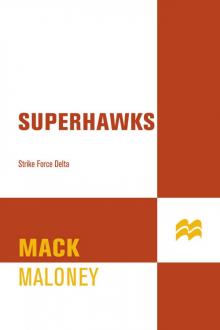 Strike Force Delta
Strike Force Delta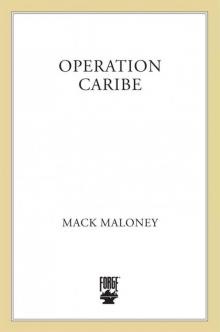 B00447820A EBOK
B00447820A EBOK Strike Force Alpha
Strike Force Alpha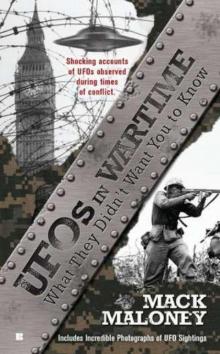 UFOs in Wartime: What They Didn't Want You To Know
UFOs in Wartime: What They Didn't Want You To Know Planet America s-2
Planet America s-2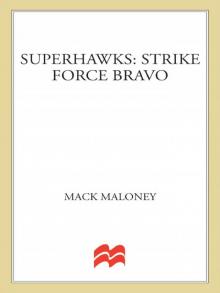 Strike Force Bravo
Strike Force Bravo The Circle War w-2
The Circle War w-2 Operation Sea Ghost ph-3
Operation Sea Ghost ph-3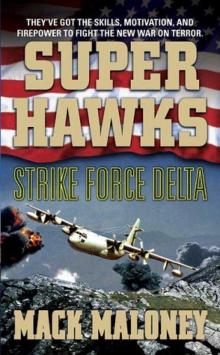 Strike Force Delta s-4
Strike Force Delta s-4 The Wingman Adventures Volume One
The Wingman Adventures Volume One The Fourth Empire s-3
The Fourth Empire s-3 Battle at Zero Point s-4
Battle at Zero Point s-4 Attack on Area 51
Attack on Area 51 Chopper Ops
Chopper Ops B003IKHEWG EBOK
B003IKHEWG EBOK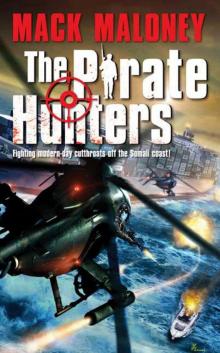 The Pirate Hunters ph-1
The Pirate Hunters ph-1 Chopper Ops co-1
Chopper Ops co-1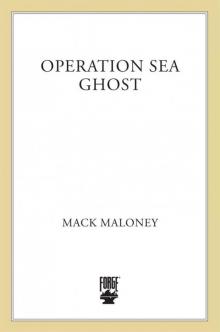 B005J4EW5G EBOK
B005J4EW5G EBOK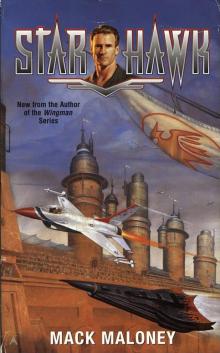 Starhawk s-1
Starhawk s-1 Storm Over Saturn s-5
Storm Over Saturn s-5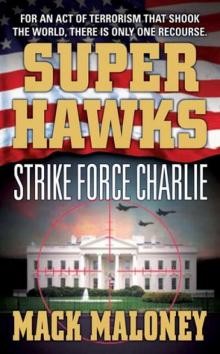 Strike Force Charlie s-3
Strike Force Charlie s-3